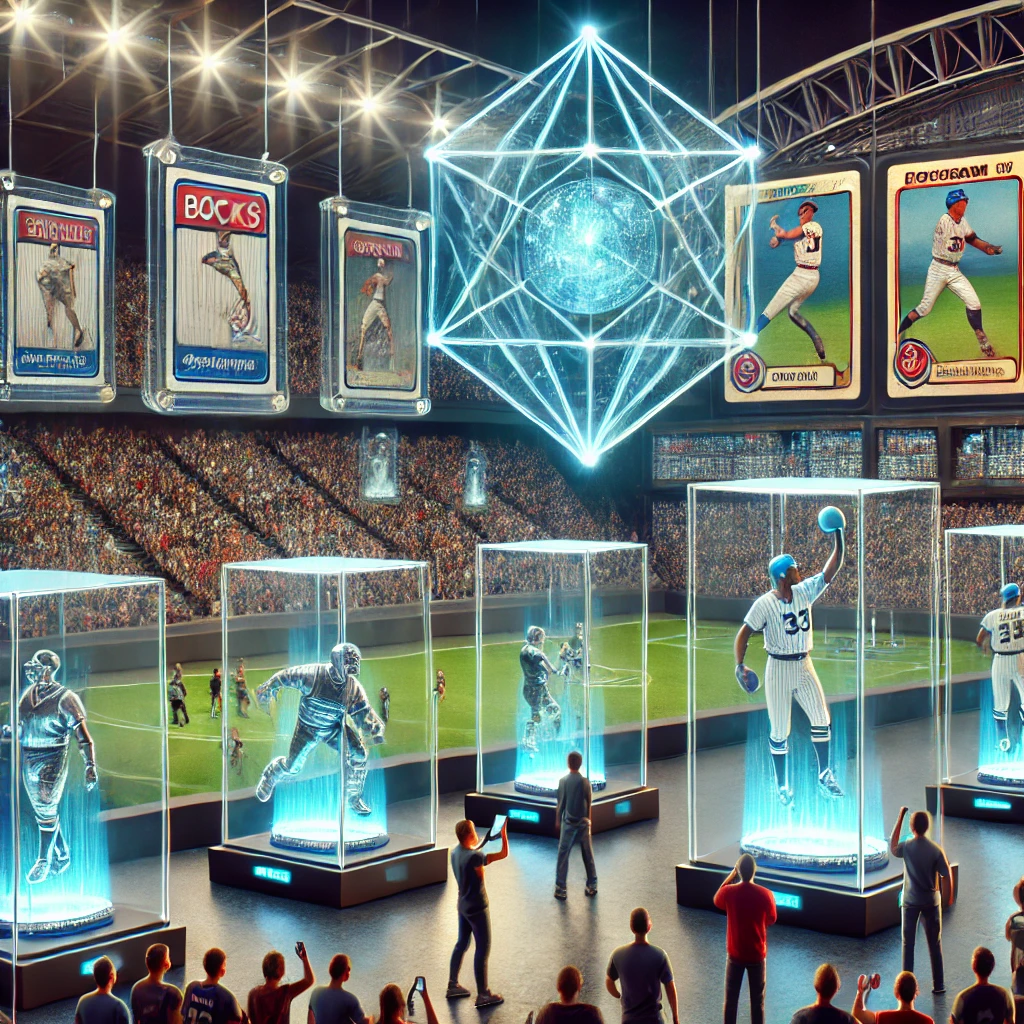The sports collectibles industry has experienced remarkable growth, evolving from traditional physical memorabilia to the burgeoning realm of digital collectibles powered by Web3 technologies. This transformation is reshaping how fans and investors engage with sports memorabilia, with projections suggesting that digital collectibles may one day surpass their physical counterparts.
The Resilient Growth of Physical Collectibles
Physical sports memorabilia, including items like trading cards, jerseys, and autographed equipment, has long been a cherished segment of the collectibles market. As of 2024, the sports memorabilia market was valued at approximately $33 billion, with expectations to reach $271.2 billion by 2034, reflecting a compound annual growth rate (CAGR) of 22.1% during the forecast period of 2024–2034.
This robust growth is driven by factors such as:
- Nostalgia and Emotional Connection: Collectors often seek tangible items that connect them to cherished sports moments or favorite athletes.
- Investment Potential: High-profile sales, like a Babe Ruth jersey fetching $24 million, highlight the lucrative nature of rare memorabilia.
- Cultural Significance: Items associated with iconic sports figures or events hold substantial cultural value, further fueling demand.
The Rise of Digital Collectibles in the Web3 Era
Parallel to the growth of physical collectibles, digital assets have emerged as a dynamic and rapidly expanding segment. Leveraging blockchain technology, digital collectibles, particularly non-fungible tokens (NFTs), offer unique ownership experiences that resonate with modern collectors.
The global collectibles market, encompassing both physical and digital assets, was estimated at $294.23 billion in 2023 and is projected to grow at a CAGR of 5.5% from 2024 to 2030. This growth is significantly influenced by:
- Technological Advancements: Blockchain ensures authenticity and provenance, addressing longstanding issues of counterfeiting in the collectibles market.
- Accessibility and Engagement: Digital platforms enable collectors worldwide to buy, sell, and trade assets seamlessly, fostering a global community.
- Integration with Popular Culture: Collaborations between sports entities and digital platforms have led to innovative collectibles, such as virtual trading cards and highlight reels.
The Argument for Digital Collectibles Surpassing Physical Ones
Several factors suggest that digital collectibles could eventually overtake physical memorabilia in prominence:
- Enhanced Security and Authenticity: Blockchain technology provides immutable records of ownership and authenticity, mitigating risks associated with counterfeit physical items.
- Global Accessibility: Digital collectibles are not constrained by geographical boundaries, allowing fans worldwide to participate in the market without logistical challenges.
- Interactive and Dynamic Content: Unlike static physical items, digital collectibles can offer interactive features, multimedia content, and updates, enhancing user engagement.
- Environmental Considerations: The production and transportation of physical memorabilia have environmental impacts, whereas digital assets offer a more sustainable alternative.
Real-World Example: NBA Top Shot
NBA Top Shot, a platform offering officially licensed NBA highlight clips as NFTs, exemplifies the potential of digital collectibles. Since its launch, it has generated hundreds of millions in sales, attracting a diverse audience ranging from traditional sports fans to cryptocurrency enthusiasts. This success underscores the viability and appeal of digital sports memorabilia.
Conclusion
The sports collectibles industry is at a pivotal juncture, with digital assets poised to revolutionize the market. While physical memorabilia continues to thrive, the advantages of digital collectibles—security, accessibility, interactivity, and sustainability—position them as formidable contenders for market dominance. As technology and consumer preferences evolve, it is plausible that digital collectibles will not only coexist with but potentially surpass physical memorabilia in the near future.
